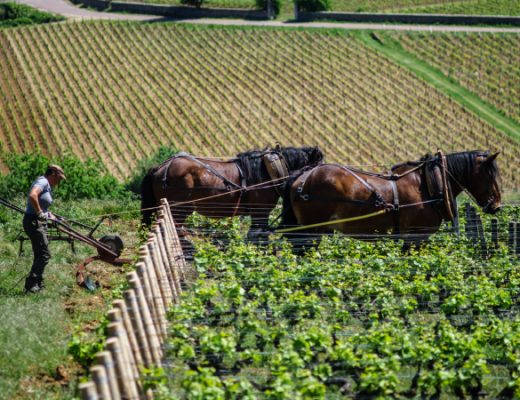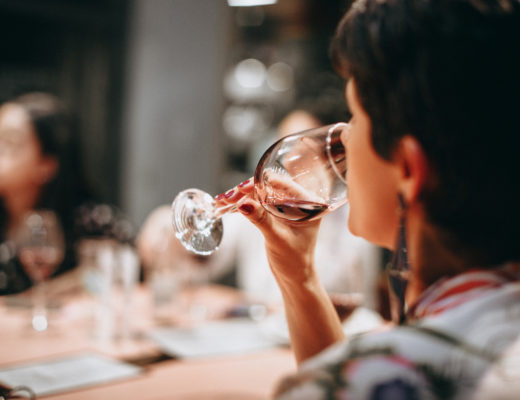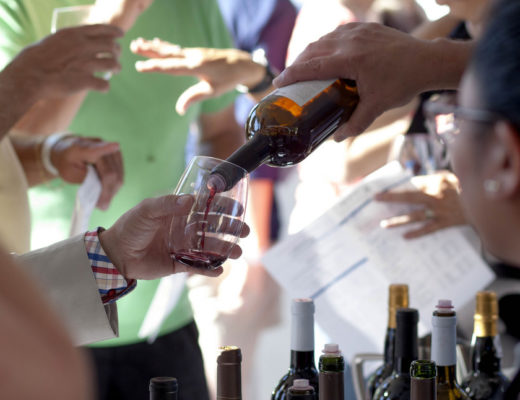story by Virginia Miller
Los Angeles’s Vespertine is a self-proclaimed “gastronomical experiment seeking to disrupt the course of the modern restaurant.” As the most talked-about restaurant in the United States at the moment, it’s immediately divisive. Though only open since July 2017, it landed at the number one spot on Los Angeles Times critic Jonathan Gold’s 101 Best Restaurants published in October. But the restaurant has sparked mixed, even negative, feelings from other critics (for example, LA Weekly and The Infatuation.)
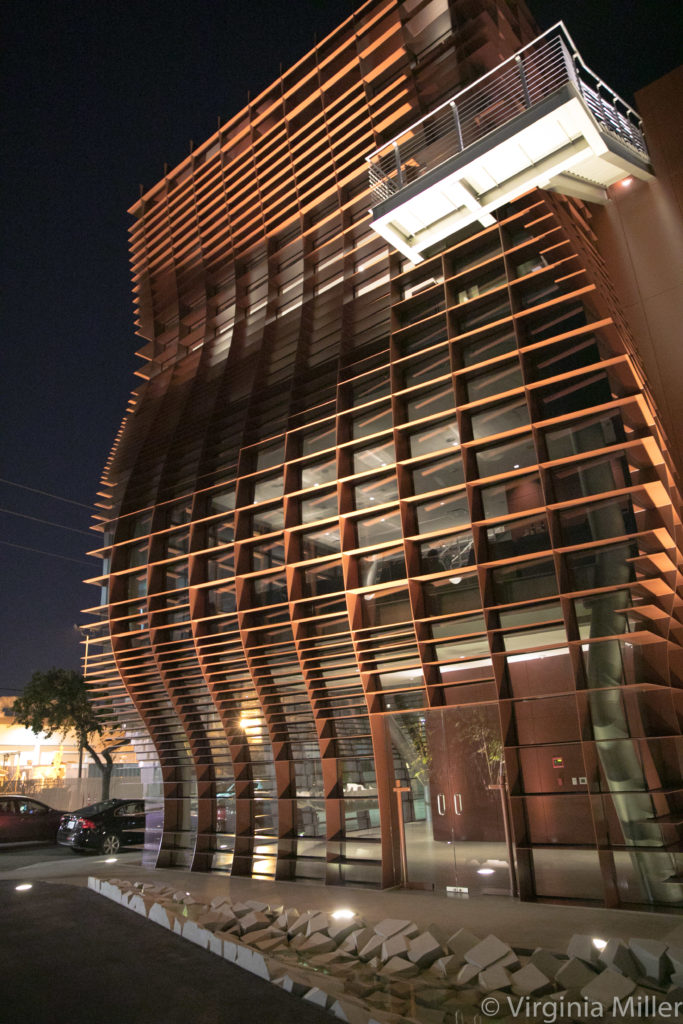
Image by Virginia Miller.
I decided to experience it for myself this fall. Designed by Eric Owen Moss, the striking monolith of a building rises in its corporate yet wave-like beauty from the otherwise dead-at-night wilds of Culver City. I knew the dinner would be different than any of the countless Michelin-starred, World’s 50 Best kinds of restaurants I’d dined at globally. It was.
After drinking a sparkling soda in the stone garden, the meal began with an elevator ride up to meet the refreshingly friendly young chef Jordan Kahn, who made his mark on L.A. with Destroyer. We were then escorted to the top floor, picking bites like candied kelp off of branches and volcanic rock, while sipping watered-down Muscat wine over crushed ice. Here we felt a bit of magic, cradled in the massive basin that is L.A., surrounded by mountains, illuminated by a soft pink sunset, reclining on padded chairs.
Escorted downstairs to cold, hard tables of steel and glass, the main dining room was not just sterile, it was uncomfortable. Thankfully, the staff was warm and gracious, keeping the meal from feeling too much like a museum.
The inconsistency of the dishes was my biggest disappointment, though I give Kahn kudos for vision and range. The ambition behind his dishes is apparent, whether a savory-sweet blackcurrant and onion “cookie” as one of many starting bites or the artful drama of white asparagus slivers over raw scallops accented by wild fennel, almond, grains and a bone marrow cream. Though they grow the white asparagus themselves, it was flavorless and firm — not silky and bright, as I have tasted it in restaurants from Amsterdam to Berlin. Ditto the too cold scallops and excessive dots of clunky bone marrow cream.
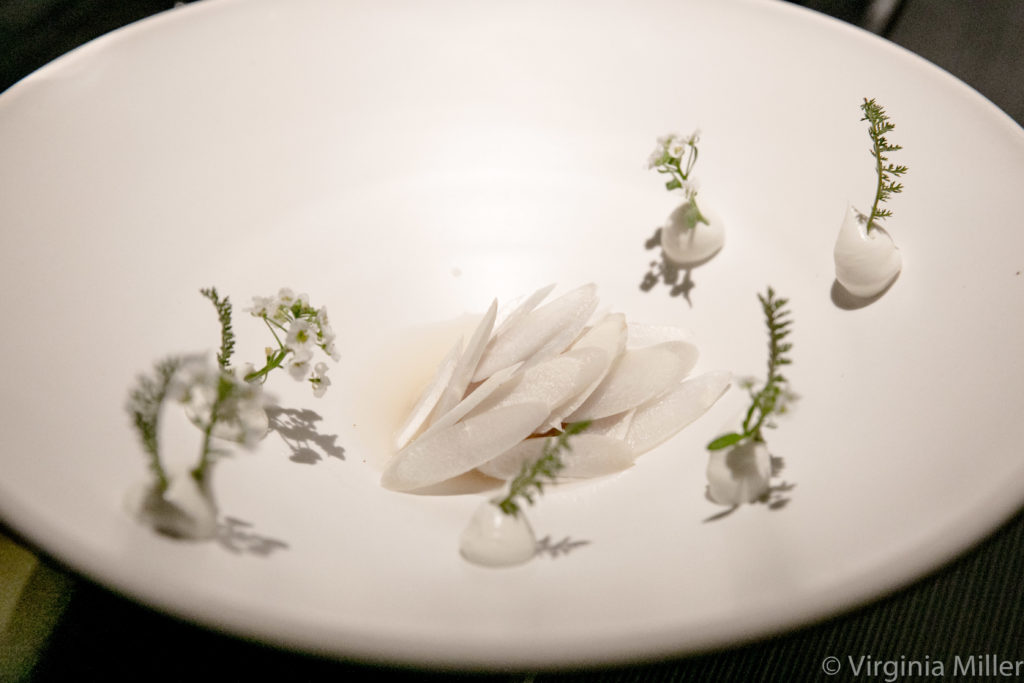
White asparagus dish. Image by Virginia Miller.
In over 18 courses and many more bites, other dishes suffered from incongruence, like a strangely icy, crunchy English peas dish. But a savory rice pudding accented with sunflower petals and endive, given a briny pop of trout roe, stood out. Like a glorified sour cream and onion dip, it recalled American childhood but with futuristic sophistication. This was the dish I found myself “oohing and aahing” over. Given time, refinement and the wisdom of experience, the ambitious Kahn could realize a stream of dishes both delicious and visionary, worthy of World’s 50 Best/Michelin-kind of accolades. But we’re not there yet.
For contrast, we tried both the drink pairings ($125 per person for the “lighter” version and $200 for the full) and the juice/non-alcoholic pairing ($85). The non-alcoholic pairings were heavy on teas and juices but blessedly dry. Not unlike the juice pairing at Single Thread in Healdsburg (Sonoma County), we were served pleasant juices like cucumber, kiwi, and geranium or subtle, more unusual offerings like sparkling redwood juice made with redwood needle tips. I appreciated hearing that the chef himself doesn’t drink so the non-alcoholic pairing was something he particularly cared about.
The sommelier was out of town the night we dined but the general manager took excellent care of us, thoughtfully answering questions, with a sake and a beer interspersed between wines. The more expected offerings were a lovely California Pinot Noir (2013 Chanin “Bien Nacido Vineyard” Santa Maria Valley) and German Riesling (2015 Langwerther Von Simmern Urgestein). We were also served wines from Australia, New Zealand, and South Africa, often beloved by New World wine drinkers, if not so much by us Old World fanatics. But as these countries’ wines grow in refined reputation, each wine Vespertine served was balanced or brought nuance to a dish.
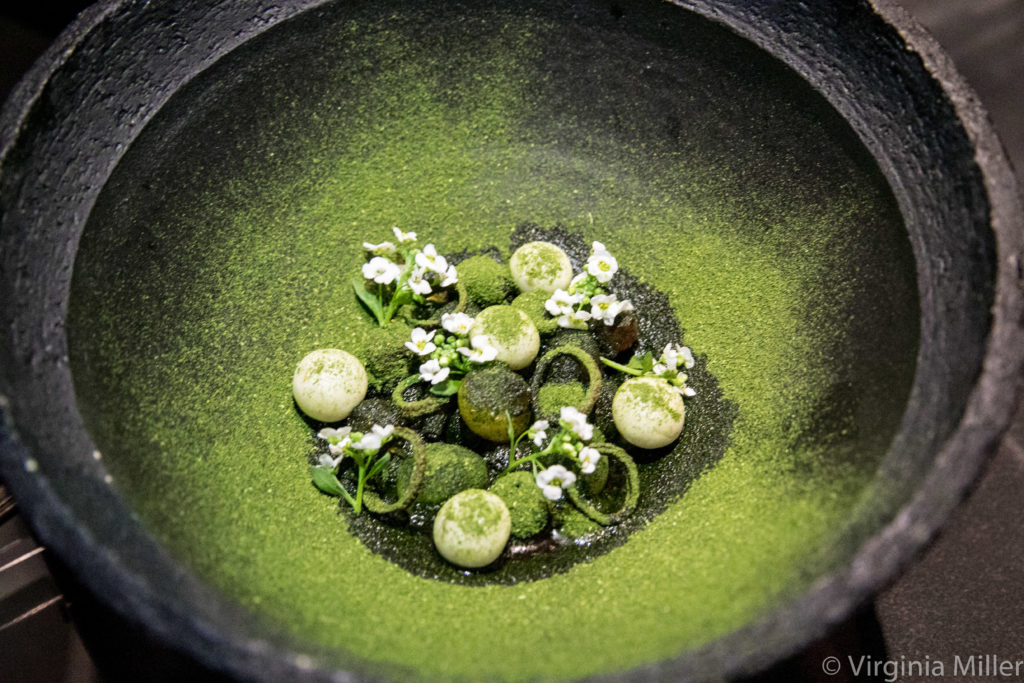
Turnip and kale powder mochi dish. Image by Virginia Miller.
2015 Peregrine Sauvignon Blanc is a bargain New Zealand wine, brightly acidic with mineral white pepper alongside pear, green apple, and floral peach blossom notes, waking up the aforementioned white asparagus dish. 2015 Alheit Cartology from South Africa’s Western Cape exhibited a saline and citrus zest quality that balanced out a turnip, burnt onion, kale powder, mochi dish accented by banana vinegar.
The most wow-inducing pairing was the final savory course of lemongrass and walnut-accented Santa Barbara sea urchin in a PX sherry “powder” paired with the oxidized sweetness of a Grenache-based 1933 J. Cazes Rivesaltes from France’s eastern Roussillon. The pairing was lush, dessert-like and bright, yet also savory and umami-rich.

Image by Virginia Miller.
At $250 per person before service, tax or drinks (which easily puts you over $1,000 for two), is Vespertine worth it? For many of us, maybe not. With time and age, Vespertine could realize greater synergy between taste and experimentation, comfort and postmodernism — even as it’s clear the rock star, outside-the-box trappings are aided by youth. As it stands, the multi-floor experience and service shine here above the food and drink.
The “moveable feast” aspect reaches its apex at the end of the meal when you are escorted back to the garden where you began, oversteps and grassy mounds to sit on warmed-up stone benches, served mignardises, coffee, tea or digestifs with a telescope for stargazing. The whimsical finish contrasts with the antiseptic dining room, futuristic yet playful. Imperfections and price aside, one thing is certain: Vespertine won’t be like any other fine dining meal you’ve had before.


